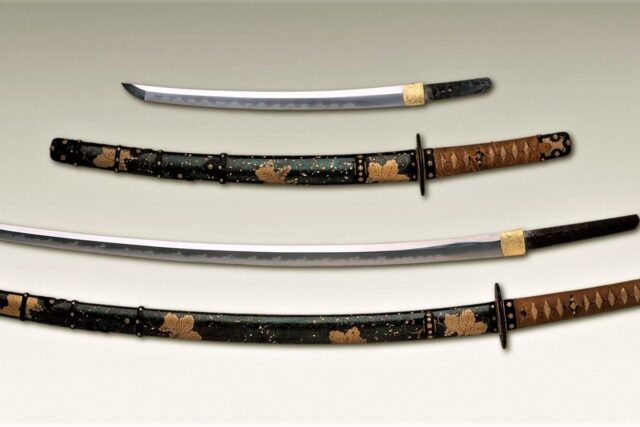Sword-making was a pastime for Japanese people for many years. A katana sword and several other Samurai swords were not simply made out of some pieces of metal. Instead, they have produced through a sacred ritual. No doubt, one of the most popular things about Japanese culture is their Samurais. You can find a variety of movies with Japanese warriors showing their unique culture. Some of the most well-known battle techniques from Japan are Kendo and karate.
Kendo is unique as it utilizes katana. This, besides the popularity of movies and anime, has increased the popularity of samurai swords. Before you decide to purchase a Katana sword, there are a couple of things you need to know about Samurai swords. This page discusses the key things you should consider before you decide to buy a Japanese sword.
The steel
One of the most crucial considerations you have to make when it comes to buying a Japanese sword is the type of steel. Most swords have an extraordinary steel that the sword smiths made by using the forging and folding process. They used this process so that they could remove the impurities from the raw iron ore. The past 100 years metallurgy technology has advanced and now you can use pure steel as a beginning material.
Choosing steel that has an even distribution of carbon can help to prevent having weak spots in the finished blade. You can start with the pure steel to allow a precise and controlled heat treatment regimen that leads to a fine grain structure. Remember that it’s this grain that produces a stronger blade that is less prone to breakage and deflection.
Forging
The forging process is what defines the Samurai sword, and authentic swords are forged. Most suppliers are offering stock removal steel swords. Therefore, these swords don’t go through the forging process and don’t have the properties of a forged blade. You should always look for forged steel blades when you decide to purchase a Samurai sword.
One of the benefits of a forged blade is that each blade can be unique and is usually produced by a skilled craftsman. This is unlike a modern blade that can be massively produced or stamped to look identical to one another; each forged blade can by special piece.
Forging tends to allow the smith to figure out how much each blade requires to be worked so that they can get the best results. While working on each piece of steel, it can be forded repeatedly. In this way, it can tighten the steel’s grain pattern to make the blade look more beautiful. This customized forging means that each sword can be unique. Therefore, you can’t find any other blade that can be the same as yours. In other words, each forged and folded blade is usually an individual expression of the fire, steel, and the smith.
Heat treating
It’s also worth mentioning that the authentic Japanese sword goes through a differentially heat treatment on the edge. The pattern you can see on the sharpened edge reflects the heat-treating process. All samurai swords undergo this treatment process and this property is called the Hamon. Remember that this treatment can change the steel’s molecular structure into martensite at the edge. It also has a softer and more ductile pearlite body.
Hence, the heat-treated Hamon can allow you to see the beauty of the steel blade and the different crystalline structure. You should always purchase a differentially heat-treated samurai sword, but some manufacturers try to use a chemical etching or polish the blade to achieve this appearance. This can only provide a temporary and cosmetic look to the blade without achieving the purpose of heat-treating. The goal of heat-treating is to change the steel to become the differential molecular structure.
Design and shape
The shape and design of a samurai sword needs to be historically correct. Keep in mind that an authentic samurai sword follows a historical tradition. You can find several designs and shapes on the market, though most of these swords don’t resemble the feudal era sword. The balance and shape of a proper Japanese sword has evolved over the years.
The life of a samurai warrior depended on their sword, so the smith had to produce a blade that he could depend on in the battlefield. It’s a good idea to buy a Japanese sword from the suppliers that respect this tradition and qualities. Good and authentic samurai swords should be determined by their cutting performance, strength, and balance. You want to have all these properties in an authentic samurai sword.
Balance
Many people rarely look into the balance of the sword when purchasing it. But this is a crucial factor that you should consider before you buy a samurai sword. Balance in a sword is one of its functionalities. You should remember that the Samurais were highly trained warriors and their swords needed to function well in extreme combat situations.
Most modern swords don’t have this functionality and cannot withstand the strains and stress of serious use. When you try to train and practice with a samurai sword, you can get the strength to handle it properly. The balance is what provides this benefit of strength while utilizing a traditional balanced sword.
Polish
Polishing the blade tends to bring the Japanese sword to its final shape. It’s worth noting that the shape of the Samurai sword can determine its success when it comes to cutting. Polishing the sword can be an overwhelming process that needs the sword’s surfaces to be refined so that they can be in harmony with each other and making sure that the blade maintains its shape.
The polishing process needs hand finishing. You can find several swords nowadays that are finished using the machines, so they don’t give the final beauty or efficiency that the sword requires. These types of swords are usually mirror bright and come with rounded lines. This is why you must always purchase a Japanese sword from reputable sellers to avoid buying fake swords




